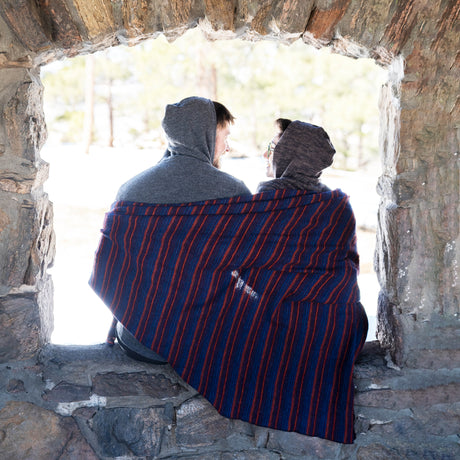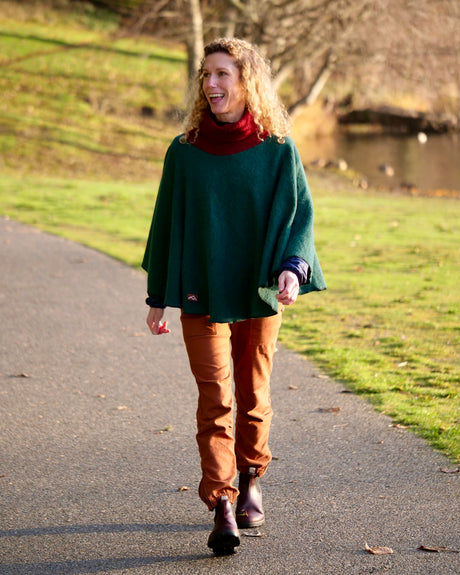With the numerous negative impacts from the recent pandemic, most of us have been searching for a way to combat the feelings of stress and isolation. An increasing amount of people have chosen to get back to nature, allowing themselves to unwind and find some calmness. My family and I have had an abundance of outdoor adventures together that we may not have been able to experience due to school schedules, sport practices, etc. But with this, I have noticed one major impact on our environment: masks. Here and there we see disposable ones being left behind. This drives home the fact that the seven principles of Leave No Trace, which was started 25 years ago, are as important as ever to our environment and wildlife.

According to their website, Leave No Trace (LNT) is an international movement, nonprofit organization, and educational program dedicated to protecting the outdoors by teaching people to enjoy it responsibly. The organization, the Leave No Trace Center for Outdoor Ethics, accomplishes this mission by delivering cutting-edge education and research to millions of people across the country every year.
At least 8 million more people this past year, according to a recent outdoors webinar, have ventured into the wilderness throughout the United States. These ballooning numbers will lead to damage being caused, most of which is preventable, if not controlled. Most of these new participants have more than likely never heard of Leave No Trace and its efforts to limit the impact of this increase in visitors. Litter, damaged trails, wildfire impact, pollution of our water systems, and wildlife encounters are all issues LNT is trying to address through its seven principles.

1. Plan and prepare
Simply summed up, “Hope for the best but plan for the worst.” Having a basic first aid kit, dressing for weather changes, and knowing the terrain you will be encountering are helpful first steps. Stick to small groups, avoiding times when trails could be congested. Walk in a single file, although my kids tell me they feel like they are back in school with this one. Avoid shortcuts, which will limit trail damage, and there is no reason not to have a map with you, either paper or your smart phone.
2. Travel and camp on durable surfaces
This is one that my kids enjoy because it allows them to stomp through the mud on trails, not creating a wider trail if you go straight through it. Having defined trails makes them more identifiable, while corralling foot traffic. These also help in reducing the creation of other routes, but please ensure to leave appropriate space for other hikers when taking a break. If you must go off trail, try to pick out durable surfaces that can withstand heavy use.
3. Dispose of waste properly
Carry it in, carry it out: this sign happens to be at almost every trail head that I have ever been to. This practice includes not only masks and food wrappers, but also items that are biodegradable. An extra step, “negative trace,” encompasses picking up trash left by others. Human waste can be discarded in catholes that are 6-8 inches deep and at least 200 feet from water sources.
4. Leave what you find
Look, but don’t touch. Leave things as they are so other hikers that come after you can experience what you saw. Avoid picking wildflowers, moving rocks, and disturbing historic artifacts. Most people have cameras on their smart phones, so feel free to shoot away.
5. Minimize campfire impacts
On most day hikes, campfires are rarely used, but if you’re on an overnighter you should do your best to keep them small, using previously constructed fire rings or mounds. Take care to burn only small diameter wood found on the ground; do not damage live or fallen trees. More importantly, beware of the fire danger level in the area. Your campfire should be completely smothered before you leave. Camping stoves are much more efficient for cooking and leave no impact.
6. Respect wildlife
When wild animals are spotted, you should keep your distance; do not attract or approach animals as some could be dangerous. They can also carry fatal diseases that can be transmitted to humans. You should never feed animals as doing so can disrupt their natural diets. If you have your pets with you, they should be controlled in natural areas by keeping them restrained.
7. Be considerate of other visitors
Last not but least, always show respect for other trail users. Keep noises at a minimal level. Trail rules, including rights of way, should be obeyed when posted. Make sure that you pick rest spots and campsites away from the trail. You can minimize your visual impacts by wearing clothes that are earth tone colors: brown, green, tan, or black, unless you are hiking during hunting season on public lands.
When out in nature it is important to follow these principles to preserve all our public lands and waters. For more information on Leave No Trace principles, please visit their website, www.lnt.org. Leave only your footprints in the dirt, but not too much impact please; take only memories and photos with you.


















































